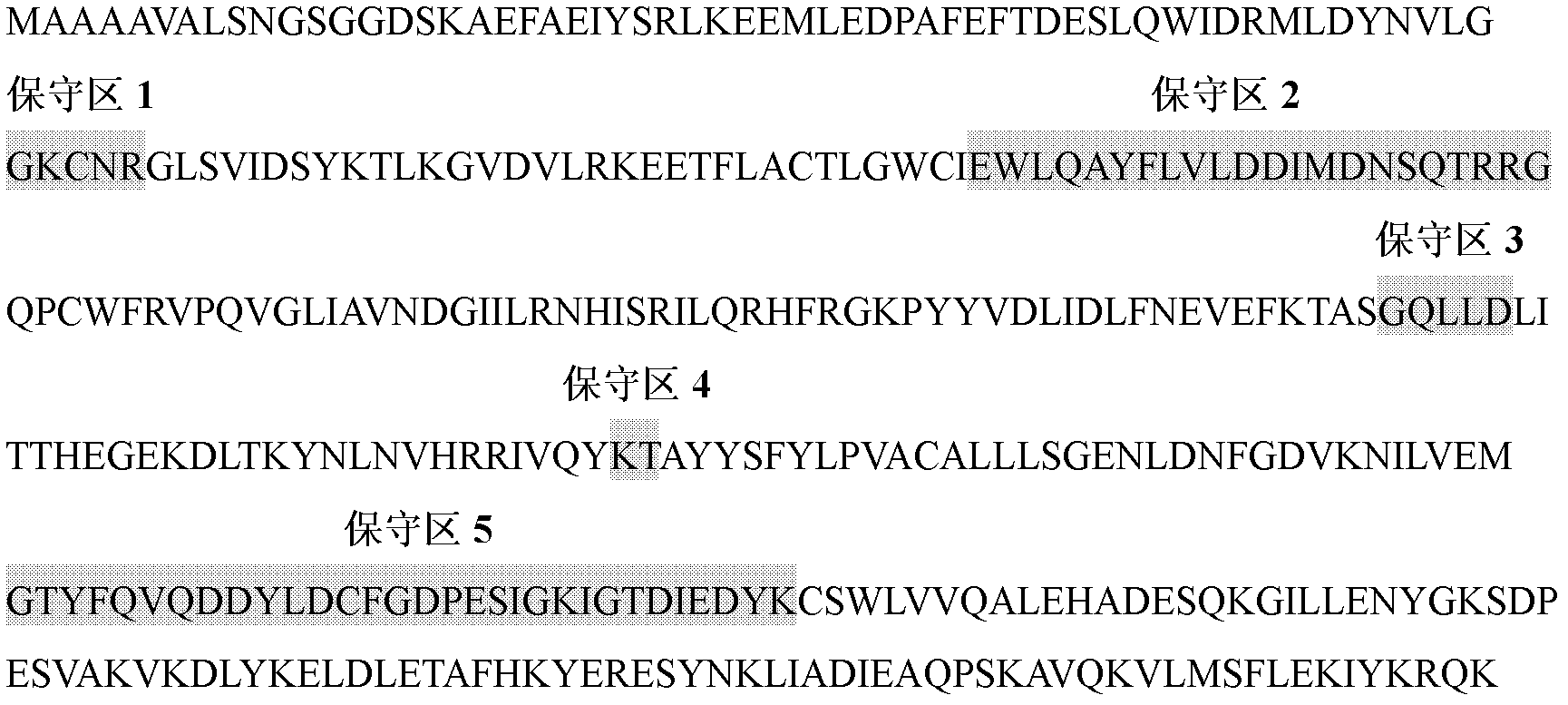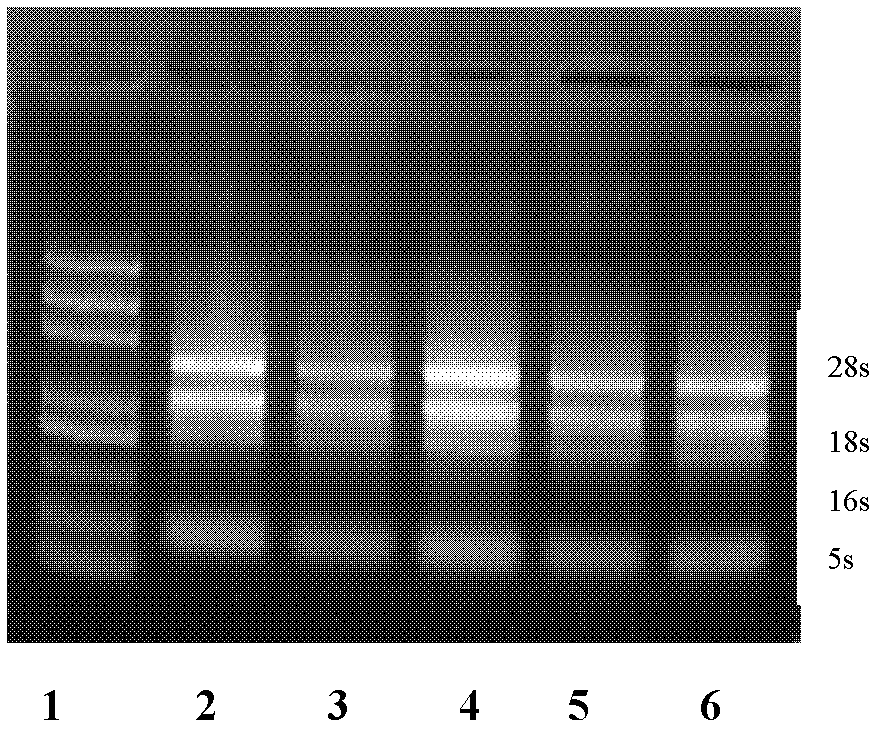Triticum aestivum farnesyl phosphate synthase (TaFPS) gene as well as isolation colonizing and enzyme activity measuring method thereof
A technology of farnesyl pyrophosphate and enzyme gene, which is applied in the field of in vitro detection of enzyme activity and can solve problems that have not been disclosed or published
- Summary
- Abstract
- Description
- Claims
- Application Information
AI Technical Summary
Problems solved by technology
Method used
Image
Examples
Embodiment 1
[0058] Embodiment 1 (wheat leaf RNA extracts)
[0059] (1) Wheat variety Jinan 13 was grown to the three-leaf stage in a constant temperature incubator (28° C.) with vermiculite.
[0060] (2) Grind the leaves into powder in liquid nitrogen, and transfer them to DEPC-treated EP tubes.
[0061] (3) Add appropriate amount of RNAiso Plus.
[0062] (4) Stand at room temperature for 5 minutes.
[0063] (5) Add 1 / 5 volume of RNAiso Plus in chloroform. Shake until creamy.
[0064] (6) Stand at room temperature for 5 minutes.
[0065] (7) Centrifuge at 12000g for 15 minutes at 4°C.
[0066] (8) Transfer the supernatant to a new DEPC-treated EP tube, add isopropanol equal to the volume of the supernatant, and mix well. Stand at room temperature for 10 minutes.
[0067] (9) Centrifuge at 12000g for 10 minutes at 4°C.
[0068] (10) Add 1 mL of 75% ethanol prepared with DEPC water to the precipitate. Centrifuge at 12000g for 5min at 4°C.
[0069] (11) Keep the precipitate and dry...
Embodiment 2
[0071] Example 2 (synthesis of the first strand of cDNA)
[0072] Follow the instructions of the Takara reverse transcription kit.
[0073] (1) Prepare the following mixture in a microtube
[0074]
[0075] (2) Carry out denaturation and annealing reactions under the following conditions on a PCR instrument: 5 minutes at 65°C—quick cooling on ice.
[0076] (3) Prepare the following reverse transcription reaction solution in the above-mentioned Microtube tube.
[0077]
[0078]
[0079] (4) Carry out the reverse transcription reaction on the PCR instrument according to the following conditions: 42° C., 60 min; 70° C., 15 min; 4° C. cooling.
Embodiment 3
[0080] Embodiment 3 (intermediate sequence amplification)
[0081] 1 Primer design for intermediate sequences
[0082] Using Primer5.0 primer design software and DNAMAN software, primers were designed according to the highly conserved region of the amino acid sequence of FPS in plants.
[0083] Upstream primer DFFPS: 5'TGGTGTATTGAATGGCTTCAAGC3' (Seq ID No: 4)
[0084] Downstream primer DRFPS: 5'TCATCCTGAACTTGAAAGTATGCTCCCAT3'. (Seq ID No: 5)
[0085] The PCR system is: cDNA 2ul, buffer 1.5μL, Taq enzyme 0.3μL, dNTP 0.7μL, DFFPS 0.6μL, DRFFPS 0.6μL, ddH2O 9.8μL.
[0086] The PCR program is: 94°C for 3min, 94°C for 45s, 55°C for 45s, 72°C for 1min, 72°C for 6min, 32cycles.
[0087] 2 PCR result detection of intermediate sequence
[0088] Mix 8 μL of PCR amplification product with 1 μL of bromophenol blue, point it into 1.5% agarose gel, electrophoresis at 120V for 45 min, observe and take pictures with an ultraviolet gel imaging system. like image 3 Shown PCR obtains the...
PUM
 Login to View More
Login to View More Abstract
Description
Claims
Application Information
 Login to View More
Login to View More - R&D
- Intellectual Property
- Life Sciences
- Materials
- Tech Scout
- Unparalleled Data Quality
- Higher Quality Content
- 60% Fewer Hallucinations
Browse by: Latest US Patents, China's latest patents, Technical Efficacy Thesaurus, Application Domain, Technology Topic, Popular Technical Reports.
© 2025 PatSnap. All rights reserved.Legal|Privacy policy|Modern Slavery Act Transparency Statement|Sitemap|About US| Contact US: help@patsnap.com



